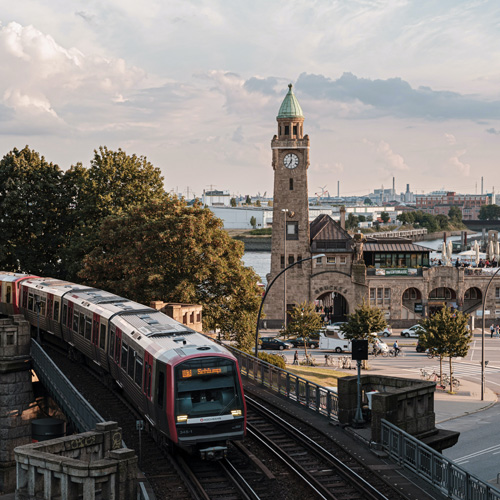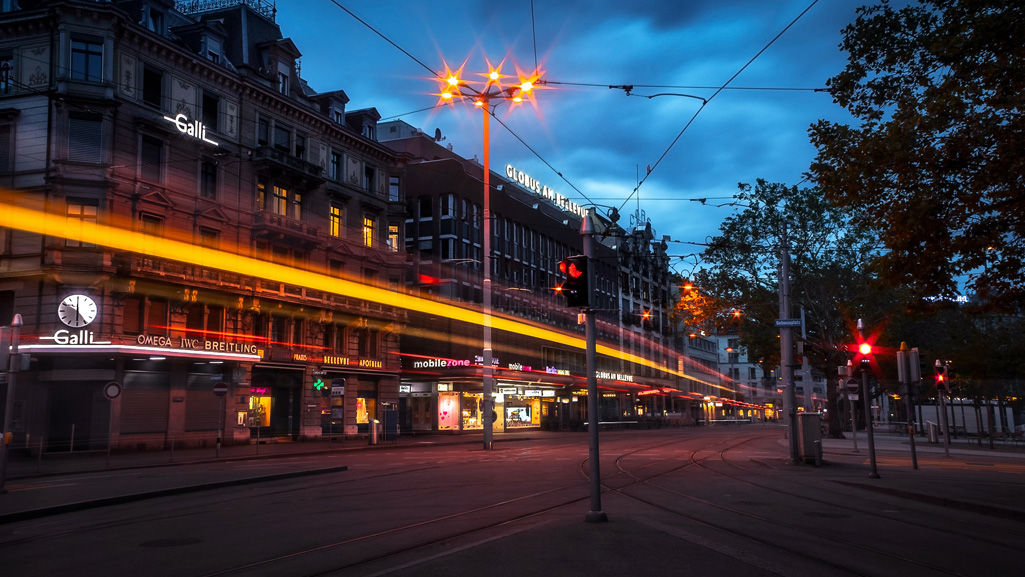Did you know that commuters spend nearly 15 million hours sitting in traffic every 24 hours on US roads? That fact would’ve sounded insane if you had asked people 200 years ago what they thought the future would be like.
Nonetheless, public transport isn’t perfect either because of transportation modes like buses that have chaotic schedules and are impractical for people living at the edges of big cities.
City leaders, entrepreneurs, policy makers and engineers are in search of technological ways to satisfy the transportation needs of citizens in context of a bigger ecosystem that seeks balance.
These are problems urban mobility in the digital age seeks to solve.
With the right transportation infrastructures in place, we can find this balance between accessible transportation for everyone and maintaining a healthy, thriving environment.
What is urban mobility?
The goal of urban mobility is to answer the question of how we can move around effectively and sustainably in densely populated areas like cities.
In the past, the need to move from one place to another as quickly as possible was a problem solved by the mass production of personal cars. But that advantage has grown to suffocate our transportation infrastructure today, because we simply didn’t plan for the integration of cars into society to be this successful. In the US alone, there are nearly 300 million cars and millions join every year.
So now we’re back to square one — struggling to get to our destinations in decent time.
With technological tools like data as a service, mobility as a service, and infrastructure as a service, urban mobility can achieve effective and sustainable transportation in densely populated areas across the globe. It just takes a bit of clever thinking – just like Henry Ford when he invented the car in 1871.
The growing importance of green urban mobility

Effective transportation has to be safe, fast, and efficient. The last two were achieved when cars replaced carriages. But with automobiles came an increase in fatal auto accidents, congestion and unfortunately, emissions that pollute our environment.
Through green urban mobility, we want to achieve all three. Here are some benefits of this new pivot in transportation today.
User experience
With our public infrastructure equipped with the ability to give, receive, and process real time data on our transportation needs, commuting becomes a much more comfortable activity — saving us time, money and health. Regardless of where you live in the city, you can get to your destination in time without hassle or stress. The goal is to make public transportation an easier option than private transportation, which relates to the next advantage.
Health
A more efficient transportation system brought by green urban mobility would eliminate congestion. With less traffic congestion, we limit the amount of pollution from the emissions that petroleum powered automobiles give off. Green urban mobility also encourages the use of smart automobiles powered by cleaner energy sources like electric batteries.
Productivity
All that time spent in traffic can be used to do more productive activities with colleagues, friends and family. A healthy society in a healthy environment combined with an efficient and effective transport is the precise combination we need for a boost in productivity and the economy in general. In fact, traffic congestion costs the US nearly 80 billion dollars annually with New York City alone forfeiting $11billion every year. Doesn’t sound so wisely spent, right?
Governments across the globe are working to reduce the inefficiencies of the current transportation system by using the concept of green urban mobility.
The value of smart technology & Artificial Intelligence in transportation and urban mobility
Green urban mobility is often powered by using technology such as AI and smart technology to obtain and process data to improve how transportation systems work and interact with each other. If these systems were implemented more often, we could experience their immense benefits.
Security
AI and smart technology could play a big role in solving crime associated with transportation such as ticket fraud. It could enable data analysis from smart transportation infrastructure like smart roads, smart signs, smart traffic lights, and smart cars.
Over 95% of fatal accidents are caused by human error. We can work to eliminate this by using autonomous self-driving cars that effectively communicate with other cars and the surrounding infrastructure. Other benefits like predictive maintenance can help us keep vehicles and roads in tip top shape, too.
Efficiency

With smart technology and AI-enabled infrastructure, congestion can be reduced by simply mapping out the most efficient paths to an individual’s destination. Smart cameras could help spot inefficiencies in public transportation by executing passenger flow management, which improves the entire user experience.
Overall, smart technology and AI help cities make their transportation systems meet the unique demands of their citizens and the surrounding environment, as well as makes mobility in general safer and more efficient.
Urban mobility projects around the globe
Many cities across the globe are doing the work to make their transport systems effective and efficient through urban mobility projects. We’ll look at two examples of green urban mobility projects in the cities of Hamburg and Hong Kong, as well as an action plan created by the EU government.
Hamburg tests innovative vehicle technologies to improve public transport routes

The public transport company Hamburger Hochbahn A is testing different innovative vehicle technologies to see if they fit everyday scheduling of transport services for the city. They’ve picked a route named the 109 of HOCHBAHN, where all buses used to transport commuters will utilize innovative driving technologies.
This route starts at the Electric Bus Terminal near Hamburg central station and ends 10 kilometers away at the underground station in Alsterdorf. Add charging stations at both ends of this lane and you have the perfect condition to test these electric and hybrid buses. Testing conditions like the one mentioned above has encouraged manufacturers to build better clean fueled vehicles. It has also stoked the public demand for clean, quiet, and efficient public transportation.
Hong Kong’s profitable model makes urban mobility sustainable
The company in charge of railway management in Hong Kong, the MTRC, has found a profitable model of urban mobility through the Rail Property approach. In the 1980s, Hong Kong integrated railway stations and real estate development around them that made public transportation financially sustainable. So instead of depending on the government for funding, the MRTC instead has the right to develop land around its railway stations.
These real estate developments rights have not only helped with improving the living conditions around these railway stations, they have also helped fund the operational and maintenance costs of running the public transportation system. It also brings in profits, making it one of the few profitable public transport systems in the world.
Now cities across East Asia like Shenzhen, China and Singapore are looking to use the Hong Kong model to fund their sustainable urban mobility projects in the future.

The Action Plan On Urban Mobility In The EU
To encourage all levels of government, authorities and stakeholders to achieve sustainable urban mobility, the European Commission adopted the Action Plan on Urban Mobility in 2009. Some themes discussed include:
- Integrated Policies: For the sake of reducing complexities and improving the interdependence of transportation systems across Europe, the EU is collaborating with local governments to set up and execute sustainable urban mobility plans.
- Greening Urban Transport: The EU Commission is in the process of testing the use and acceptance of cleaner alternative sources of energy to fuel the economy. Through the European Green Cars Initiative, the EU Commission has funded new projects that develop electric vehicles with emphasis on technologies like batteries.
- Focusing on Citizens: The EU Commission aims to solve challenges people encounter throughout the shift to sustainable urban mobility. This involves considering traveler rights and accommodating designs to help increase access for people with limited mobility.
- Strengthening Funding: Through European Banking Instruments, the EU Commission has incentivized local, state, and federal governments to move towards a sustainable urban mobility program with private and public sources of capital funding.
- Sharing Experience and Knowledge: Through programs like CIVITAS Forum network, the EU has encouraged the sharing of data between local and regional authorities to facilitate the adoption of green urban mobility across different cities and countries. With the sharing of experience and knowledge on significant activities such as data collection and analysis, the process of urban mobility becomes easier and cheaper to execute.
- Optimizing Urban Mobility: When it comes to the optimization of urban mobility, the EU commission has focused on transportation that’s inexpensive, fast, customized, and reliable.
We can see from this example that the integration of all themes we mentioned above create a synergy of clean energy, smart transportation infrastructure, inter regional policies and alternative modes of transportation.
Smart urban mobility solutions and innovations
We’ve looked at sustainable urban mobility, its benefits, and policies and actions geared toward bringing those benefits to cities across the world. Let’s look at some smart urban mobility solutions available to us to help make that happen:
- Data-powered Solutions: Here we have software products that use smart technological tools to obtain and interpret data for traffic management. A good example would be PTV Visum — a traffic planning software that helps increase the efficiency and safety for all modes of transport.
- Mobility Consumer Goods: With the work Tesla has done to bring electric vehicles to the masses, other car manufacturers have been motivated to go green with electric and hybrid versions of their models. Smart autonomous electric vehicles put into a public autonomous transport grid to maximize efficiency are the future of urban mobility – and can become the present.
- Infrastructure Solutions: The ecosystem of smart urban mobility solutions is not complete without smart traffic signs, and smart roads that can interact with each other to find the safest, fastest, and greenest ways to help commuters go about their business. From preventive maintenance to weather forecasting, smart infrastructure paves the path for smart urban mobility solutions.
Urban mobility in the digital age is essential for solving the problems facing our existing transportation infrastructure today. It takes a joint effort of the science and technology sectors, the policy-makers in government, the private sector and various stakeholders from the federal and local communities across the country to make it a reality. When we work together, we can implement the concept of sustainable urban mobility to improve our transportation systems and preserve the environment.
Urban mobility solutions by PTV Group
PTV Group offers a range of software solutions to support better urban mobility. Modeling and simulation tools, such as PTV Visum, Vissim, Viswalk and Vistro, help planners optimize all modes of mobility in urban areas. Other PTV software solutions support planning of specific aspects of urban mobility: Road safety, Mobility as a Service / Mobility on demand, optimization of traffic lights, and others.
